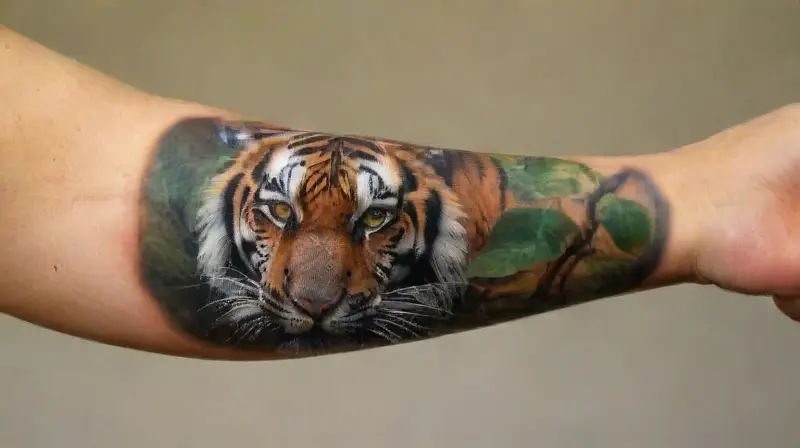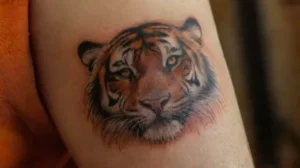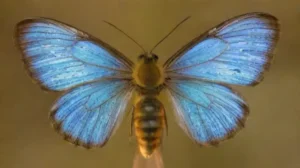Tattoos have evolved from ancient markings to a contemporary form of self-expression. Today, many individuals choose designs that reflect their passions, values, and beliefs. Among these, wildlife-themed tattoos have gained popularity as a way to showcase love for nature and dedication to conservation.
In an era where environmental issues are increasingly prominent, these tattoos serve as powerful symbols. They often represent the interconnectedness of earth’s species and the urgent need to protect our natural habitats for future generations.
The Significance of Wildlife Tattoos
Wildlife tattoos often symbolize a deep connection to the natural world. For many, these designs are more than just aesthetic choices—they are a statement about their commitment to protecting endangered species and ecosystems.
These tattoos can also represent personal experiences or encounters with wildlife, serving as a lasting reminder of moments spent in nature. They evoke a sense of responsibility to advocate for the preservation of all living creatures.
Wildlife imagery in tattoos can also act as conversation starters, raising awareness about environmental challenges. By displaying such designs, an individual can inspire others to learn more about conservation efforts.
Popular Wildlife Tattoo Designs
Some of the most common wildlife tattoos include animals like elephants, wolves, and eagles. Each species carries its own symbolism—strength, freedom, and wisdom, respectively. These designs are often detailed and realistic, emphasizing the beauty of biodiversity.
Other popular motifs include floral elements, trees, and water scenes, which complement animal designs and highlight the habitats crucial for wildlife survival. Such complementary elements showcase the importance of preserving entire ecosystems, not just individual species.
Minimalist and watercolor styles are favored for their modern aesthetic, making wildlife tattoos more appealing to a diverse audience. Regardless of the style, the underlying message remains one of respect and advocacy for nature.
The Role of Animal Symbols in Conservation

Animals in tattoos often symbolize broader concepts like resilience, freedom, and protection. For instance, a lion tattoo might represent leadership and courage, inspiring activists to continue their conservation efforts.
Designs incorporating endangered species aim to raise awareness about their plight. By wearing these symbols, individuals can highlight the need for urgent conservation policies and actions.
Animal symbols can also foster a sense of unity among conservationists, serving as a shared emblem of their mission. Such tattoos create a visual reminder of the importance of safeguarding our planet’s biodiversity.
Ethical Considerations in Wildlife Tattoos
When choosing a wildlife-themed tattoo, ethical considerations are essential. Artists should prioritize designs that do not promote the illicit trade of protected species or perpetuate misconceptions.
Opting for artwork created from sustainable sources or responsible artists ensures that the tattoo reflects genuine support for conservation. This approach also helps to avoid unintended harm to wildlife through insensitivity or exploitation.
Furthermore, some individuals may choose symbolic representations rather than realistic depictions to honor animals without encouraging any harmful practices. Ethical choices in tattoo design underline the commitment to positive environmental impact.
The Impact of Wildlife Tattoos on Conservation Awareness
Wildlife tattoos can significantly influence public attitudes toward conservation. When prominent figures display such designs, it can boost awareness and foster a collective sense of responsibility.
These tattoos often serve as personal testaments to one’s dedication, encouraging others to learn about environmental issues. By making conservation visible, they can help shift societal norms toward more eco-friendly behaviors.
Over time, a growing trend of wildlife tattoos may contribute to increased funding and support for conservation projects. They act as both personal art and powerful tools for activism, highlighting the importance of integrating art into environmental efforts.
The Role of Tattoo Artists in Conservation Efforts

Tattoo artists play a crucial role in promoting wildlife conservation through their work. They can collaborate with environmental organizations to create meaningful and impactful designs.
Some artists dedicate their craft to raising funds for conservation initiatives or advocating for specific species. Their creative platform can educate the public and inspire action.
By designing authentic and respectful wildlife tattoos, artists can also influence societal perceptions and emphasize the importance of preserving natural ecosystems. Their artistry becomes a vital part of the conservation movement.
Personal Stories Behind Wildlife Tattoos
Many individuals choose wildlife tattoos to commemorate personal encounters with nature. These stories often reflect a profound bond with specific animals or habitats.
For some, the design symbolizes a life-changing experience, such as volunteering in conservation projects or surviving a wildlife encounter. Such tattoos serve as lifelong reminders of their commitment and passion.
Sharing these stories can inspire others to explore their own connections with nature and participate in conservation efforts. They highlight the deeply personal motivation behind each tattoo.
Conclusion
Wildlife-themed tattoos are more than just artwork—they represent a powerful message about our planet’s fragile ecosystems. Through their designs, individuals express their support for conservation and inspire others to take action.
As awareness about environmental issues grows, these tattoos can serve as ongoing visual reminders of our collective responsibility. Embracing art in the service of nature can foster a more sustainable and compassionate world.





